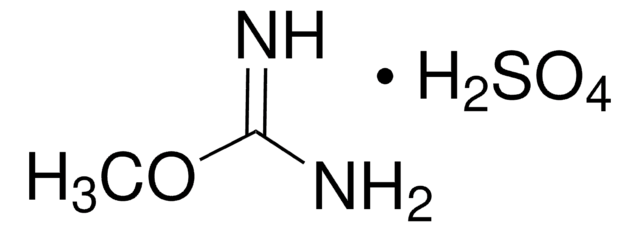V900920
L-(+)-Arabinose
Vetec™, reagent grade, ≥99%
Synonym(s):
Aldehydo-L-arabinose
Sign Into View Organizational & Contract Pricing
All Photos(3)
About This Item
Empirical Formula (Hill Notation):
C5H10O5
CAS Number:
Molecular Weight:
150.13
Beilstein:
1723085
EC Number:
MDL number:
UNSPSC Code:
12352201
PubChem Substance ID:
Recommended Products
grade
reagent grade
product line
Vetec™
Assay
≥99%
mp
160-163 °C (lit.)
storage temp.
room temp
SMILES string
OC[C@H](O)[C@H](O)[C@@H](O)C=O
InChI
1S/C5H10O5/c6-1-3(8)5(10)4(9)2-7/h1,3-5,7-10H,2H2/t3-,4-,5+/m0/s1
InChI key
PYMYPHUHKUWMLA-VAYJURFESA-N
Application
- Halopseudomonas species: Cultivation and molecular genetic tools.: This study describes the application of L-(+)-Arabinose in the cultivation of Halopseudomonas species, highlighting its role in microbial biotechnology and genetic tool development (Kruse et al., 2024).
- easyPACId, a Simple Method for Induced Production, Isolation, Identification, and Testing of Natural Products from Proteobacteria.: Discusses a methodology that includes the use of L-(+)-Arabinose for inducing the production of natural products in Proteobacteria, demonstrating its value in microbial natural product research (Bode et al., 2023).
Biochem/physiol Actions
L-Arabinose is the naturally occurring isomer and is a constituent of plant polysaccharides. Most bacteria contain an inducible arabinose operon that codes for a series of enzymes and transporters that allows L-arabinose to be used as the sole carbon source in microbial culture.
Other Notes
To gain a comprehensive understanding of our extensive range of Monosaccharides for your research, we encourage you to visit our Carbohydrates Category page.
Legal Information
Vetec is a trademark of Merck KGaA, Darmstadt, Germany
Storage Class Code
11 - Combustible Solids
WGK
WGK 3
Flash Point(F)
Not applicable
Flash Point(C)
Not applicable
Certificates of Analysis (COA)
Search for Certificates of Analysis (COA) by entering the products Lot/Batch Number. Lot and Batch Numbers can be found on a product’s label following the words ‘Lot’ or ‘Batch’.
Already Own This Product?
Find documentation for the products that you have recently purchased in the Document Library.
Customers Also Viewed
Jiaorong Tan et al.
Journal of diabetes research, 2019, 5483946-5483946 (2019-06-22)
This study is aimed at evaluating the effects, functions, and mechanism of HNF1α on hepatic glycolipid metabolism. In this study, free fatty acid- (FFA-) induced steatosis of hepatocyte liver cell LO2 was used as an in vitro model. The methods
Naeem Anwar et al.
PloS one, 9(8), e106095-e106095 (2014-08-26)
In Salmonella enterica serovar Typhimurium (S. Typhimurium), biofilm-formation is controlled by the cytoplasmic intracellular small-molecular second messenger cyclic 3', 5'-di- guanosine monophosphate (c-di-GMP) through the activities of GGDEF and EAL domain proteins. Here we describe that deleting either dsbA or
Wei Sun et al.
Infection and immunity, 82(10), 4390-4404 (2014-08-13)
Here, we constructed a Yersinia pseudotuberculosis mutant strain with arabinose-dependent regulated and delayed shutoff of crp expression (araC P(BAD) crp) and replacement of the msbB gene with the Escherichia coli msbB gene to attenuate it. Then, we inserted the asd
Nicole Acosta et al.
Journal of bacteriology, 197(2), 262-276 (2014-11-05)
The Cpx pathway, a two-component system that employs the sensor histidine kinase CpxA and the response regulator CpxR, regulates crucial envelope stress responses across bacterial species and affects antibiotic resistance. To characterize the CpxR regulon in Vibrio cholerae, the transcriptional
Jiahui Wu et al.
The Biochemical journal, 464(1), 13-22 (2014-08-29)
Ca2+ is a key intermediary in a variety of signalling pathways and undergoes dynamic changes in its cytoplasmic concentration due to release from stores within the endoplasmic reticulum (ER) and influx from the extracellular environment. In addition to regulating cytoplasmic
Our team of scientists has experience in all areas of research including Life Science, Material Science, Chemical Synthesis, Chromatography, Analytical and many others.
Contact Technical Service









